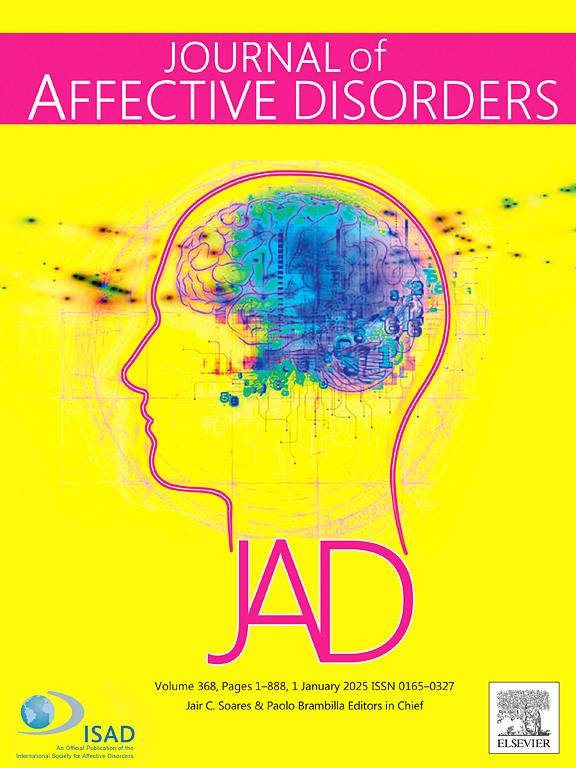Alexithymia and facial expression recognition: A systematic review and meta-analysis
IF 4.9
2区 医学
Q1 CLINICAL NEUROLOGY
引用次数: 0
Abstract
Objectives
The primary aim of this systematic review and meta-analysis was to estimate the strength of the relationship between alexithymia and facial expression recognition. Secondary aims were to determine if the strength of the relationship was moderated the type of stimuli (e.g., dynamic, static) used in the study, and whether studies excluded participants with mental health disorders.
Methods
Web of Science, PsycINFO, MEDLINE, and Scopus database searches were conducted on 21 st June 2024. Studies were included if they comprised participants aged between 16 and 65 years, included a validated measure of alexithymia, a forced choice facial expression recognition labelling task, and reported the relationship between these variables. Risk of bias was assessed using the AXIS tool.
Results
Twenty-four studies were included in a random effects meta-analysis revealing a significant, medium, negative relationship between alexithymia and overall facial expression recognition ability, r = −0.24, CI [−0.29, −0.18]. Small, negative relationships were observed for recognition of anger, disgust, fear, happiness, and sadness. The type of stimuli moderated the strength of the relationship, with significant negative relationships between alexithymia and recognition of static facial expressions observed, but no significant relationship observed for dynamic stimuli. Exclusion of participants with mental health disorders did not moderate the strength of the relationship.
Conclusions
Results indicate alexithymia is associated with a global deficit labelling static facial expressions, that does not appear to be attributable to comorbid mental health disorders. Further research is needed to clarify the relationship between alexithymia and recognition of dynamic facial expressions.
述情障碍和面部表情识别:一项系统综述和荟萃分析。
目的:本系统综述和荟萃分析的主要目的是评估述情障碍与面部表情识别之间的关系强度。次要目的是确定研究中使用的刺激类型(例如,动态的,静态的)是否调节了这种关系的强度,以及研究是否排除了有精神健康障碍的参与者。方法:检索Web of Science、PsycINFO、MEDLINE和Scopus数据库,检索时间为21 。研究包括年龄在16到65岁 之间的参与者,包括述情障碍的有效测量,强迫选择面部表情识别标签任务,并报告这些变量之间的关系。使用AXIS工具评估偏倚风险。结果:24项研究被纳入随机效应荟萃分析,结果显示述情障碍与整体面部表情识别能力呈显著、中等、负相关,r = -0.24, CI[-0.29, -0.18]。在识别愤怒、厌恶、恐惧、快乐和悲伤时,观察到一些小的、消极的关系。刺激类型调节了这种关系的强度,述情障碍与静态面部表情的识别之间存在显著的负相关关系,但在动态刺激下没有显著的关系。排除有精神健康障碍的参与者并没有缓和这种关系的强度。结论:结果表明述情障碍与静态面部表情的整体缺陷相关,这似乎不能归因于共病性精神健康障碍。述情障碍与动态面部表情识别之间的关系有待进一步研究。
本文章由计算机程序翻译,如有差异,请以英文原文为准。
求助全文
约1分钟内获得全文
求助全文
来源期刊

Journal of affective disorders
医学-精神病学
CiteScore
10.90
自引率
6.10%
发文量
1319
审稿时长
9.3 weeks
期刊介绍:
The Journal of Affective Disorders publishes papers concerned with affective disorders in the widest sense: depression, mania, mood spectrum, emotions and personality, anxiety and stress. It is interdisciplinary and aims to bring together different approaches for a diverse readership. Top quality papers will be accepted dealing with any aspect of affective disorders, including neuroimaging, cognitive neurosciences, genetics, molecular biology, experimental and clinical neurosciences, pharmacology, neuroimmunoendocrinology, intervention and treatment trials.
 求助内容:
求助内容: 应助结果提醒方式:
应助结果提醒方式:


